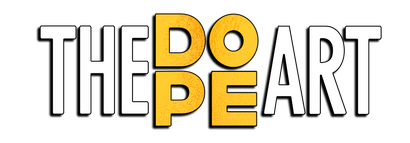Your Cart is Empty
FREE SHIPPING ON ORDERS OVER $100 in the U.S.
FREE SHIPPING ON ORDERS OVER $100 in the U.S.
Macabre Definition: Exploring the Dark Side
February 27, 2023 6 min read
What Does Macabre Mean?
Humanity has always been fascinated with the darker side of life. From ghost stories to horror movies, people find an inexplicable thrill in exploring the macabre definition. But what exactly does the term "macabre" mean, and why do we find it so intriguing? In this article, we'll delve into the definition of macabre, its historical roots, and its place in modern culture.
The term "macabre" refers to something that is disturbing, gruesome, or unsettling. It often involves themes of death, decay, and the supernatural, and can be found in various forms of art, literature, and media. The word itself comes from the Dance of Death, a medieval artistic motif that depicted death as a skeletal figure leading people from all walks of life to their final destination. Today, the term "macabre" is used to describe anything that is morbid or disturbing in nature, and is often associated with horror and Gothic fiction.
Macabre embodies a dark and eerie style, often linked to themes of death, decay, and the supernatural. It's a term commonly associated with art and literature that delves into the horrifying and grotesque, presenting grim and morbid details. Originating from medieval artistic and literary expressions, macabre underscores the fleeting nature of human existence, using haunting visuals and stories to stir profound feelings and contemplations about life's impermanence.
The Origins of Macabre
The origins of the macabre can be traced back to the medieval Dance of Death, a popular artistic motif that portrayed death as a skeletal figure, leading people from all walks of life to their final destination. The dance was a reminder that death is an equalizer, and that all humans will eventually meet their fate. This theme was often depicted in artwork, with the most famous example being the Danse Macabre mural at the Cemetery of the Holy Innocents in Paris.
The intricate and haunting details of gothic interior design often embody the essence of the macabre, with their dark color palettes, ornate patterns, and mysterious atmospheres.
In the 18th and 19th centuries, the macabre became more prevalent in literature, with the rise of Gothic fiction. Gothic novels, such as Mary Shelley's Frankenstein and Bram Stoker's Dracula, were characterized by dark, atmospheric settings and supernatural elements. The genre was immensely popular and had a lasting influence on the horror genre.
Macabre in Culture
The macabre has had a significant influence on popular culture, particularly in the horror genre. Horror movies, books, and television shows often feature elements of the macabre, such as ghosts, vampires, and zombies. The genre has a devoted fan base and continues to be a major part of modern culture.
The macabre has also influenced other art forms, such as music and visual art. The band The Cramps, for example, was known for their macabre lyrics and goth-inspired fashion. Visual artists, such as H.R. Giger, are also known for their macabre themes, with Giger's most famous work being the design of the Xenomorph creature in the Alien film franchise
Macabre Art History
In the 18th and 19th centuries, the macabre became more prevalent in art, particularly in the Romantic movement. Romantic artists, such as Francisco Goya and William Blake, were known for their dark and often supernatural subject matter. Goya's series of etchings, The Caprices, depicted surreal and macabre scenes, while Blake's paintings and illustrations often featured supernatural beings and biblical scenes.
The macabre continued to be a popular theme in art throughout the 20th century. The Surrealist movement, for example, often explored themes of death and decay in their artwork. Salvador Dali's painting, The Persistence of Memory, features melting clocks and other surreal elements, while Max Ernst's collage, The Horde, depicts a group of monstrous creatures.
The macabre has also been a major theme in modern and contemporary art. The artist Jesse Johnson is known for his controversial artworks, such as Time is King, which features a faceless skeleton king in a fashionable suit. Other contemporary artists, such as Banksy and Cindy Sherman, have also explored themes of death and mortality in their artwork.
Symbolic Meaning in Macabre Art
Macabre Artwork often contains symbolic meanings that convey deeper messages about life, death, and the afterlife. For example, the image of a skeleton is often used to represent the inevitability of death and the transience of human life. The use of skulls and bones can also symbolize the fragility of life and the idea that death is always near.
Other common symbols in macabre art include the hourglass, which represents the passage of time, and the scythe, which symbolizes the Grim Reaper and the inevitability of death. These symbols are often used in combination with images of decay, such as rotting flesh or decaying buildings, to create a sense of unease and discomfort in the viewer.
Macabre In Pop Culture
The macabre has had a significant impact on pop culture, particularly in the horror genre. It has been a staple of horror movies, television shows, and literature, with its disturbing and unsettling themes drawing audiences in and keeping them on the edge of their seats.
In film, the macabre can be seen in classic horror movies such as "The Exorcist" and "The Shining," which feature supernatural and otherworldly elements that leave a lasting impression on viewers. More recent horror films, such as "Hereditary" and "Midsommar," also explore themes of the macabre, with their unsettling and disturbing imagery staying with audiences long after the credits roll.
The macabre has also been a major theme in television shows, with popular series like "American Horror Story" and "The Walking Dead" featuring grotesque and unsettling imagery that keeps viewers engaged and invested in the story.
In literature, the macabre has been a staple of horror fiction since the genre's inception. Classic horror novels like "Dracula" and "Frankenstein" feature macabre themes of death and the supernatural, while more modern works like Stephen King's "It" and Shirley Jackson's "The Haunting of Hill House" continue to explore the macabre in new and exciting ways.
The macabre has even made its way into pop music, with artists like Marilyn Manson and Rob Zombie incorporating macabre imagery and themes into their music and stage performances.
Macabre Definition Conclusion
Macabre Definition: A term used to describe something that is disturbing, unsettling, and often involves themes of death, decay, and the supernatural. Despite its unsettling nature, the macabre has had a significant impact on art, literature, and pop culture.
From medieval art to modern horror movies, the macabre has fascinated and terrified audiences for centuries, providing a powerful tool for exploring the human condition and the darker aspects of life. Whether it's through Gothic literature, horror films, or contemporary art, the macabre continues to captivate and inspire audiences around the world.
While the core essence of the term remains tied to the unsettling and morbid, contemporary interpretations often play with these themes, offering a more nuanced or multi-dimensional view of the macabre.
Click here to discover the best collection of macabre art.
What is the origin of the term "macabre"?
The term "macabre" is believed to have originated from the Old French word "macabré," which is linked to the "Dance of Death" artistic and literary motif of the Middle Ages, emphasizing the universality of mortality.
How is the macabre theme commonly represented in art and literature?
In art and literature, the macabre theme is often represented through dark, grim, and unsettling imagery or narratives, focusing on subjects like death, decay, and the supernatural.
Are there specific genres in modern entertainment that predominantly feature macabre themes?
Yes, genres such as horror, gothic literature, dark comedy, and psychological thrillers often incorporate macabre themes, presenting them in various shades from deeply disturbing to satirical.
How has the portrayal of the macabre evolved in contemporary culture compared to its medieval origins?
While the medieval portrayal of the macabre was more direct and served as a reminder of human mortality, contemporary portrayals often play with the theme in a more stylized, nuanced, or multi-dimensional manner, sometimes blending it with humor or using it to explore deeper psychological themes.
Can the macabre be found in everyday life, or is it limited to artistic expressions?
While the term "macabre" is most commonly associated with artistic and literary expressions, elements of the macabre can be found in everyday life, especially in events or situations that evoke feelings of dread, horror, or a stark reminder of mortality.
Subscribe
Sign up to get the latest on sales, new releases and more …
Size Charts










